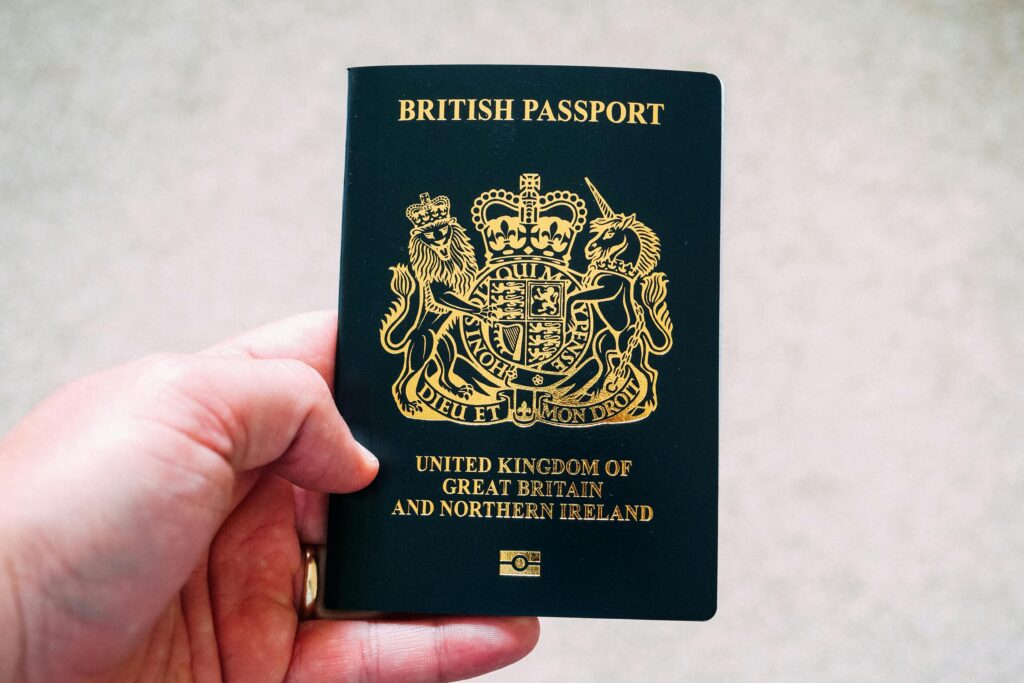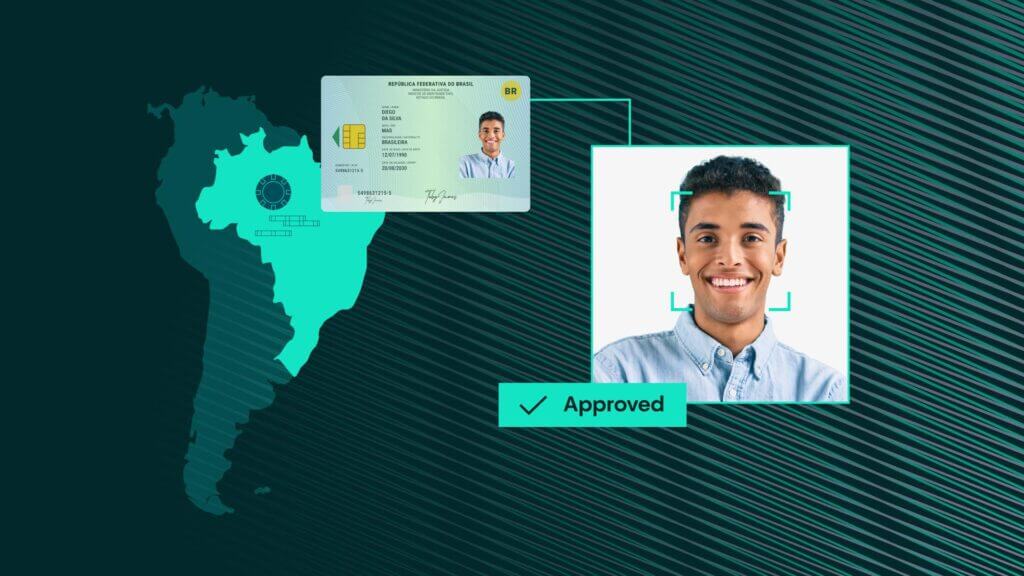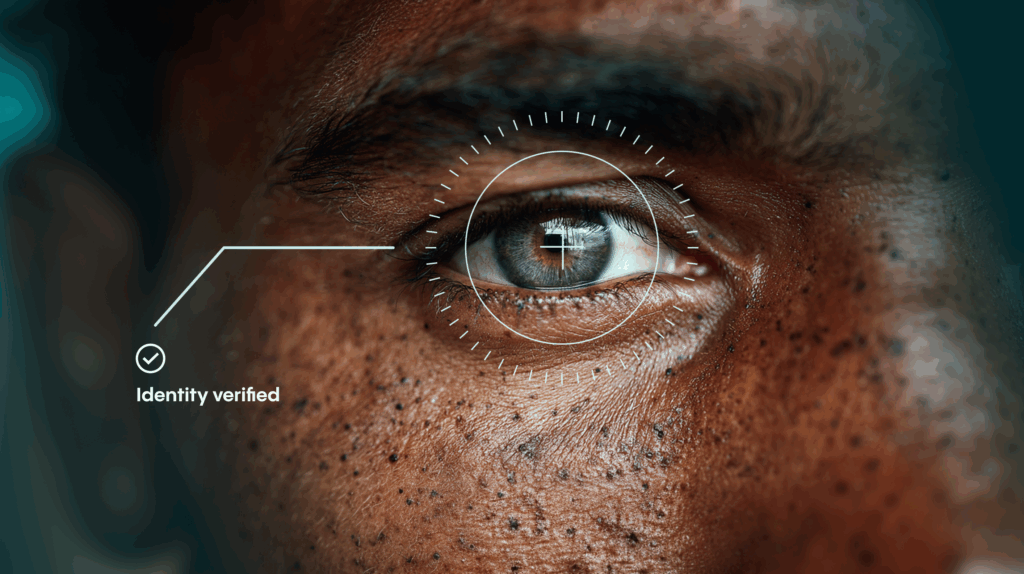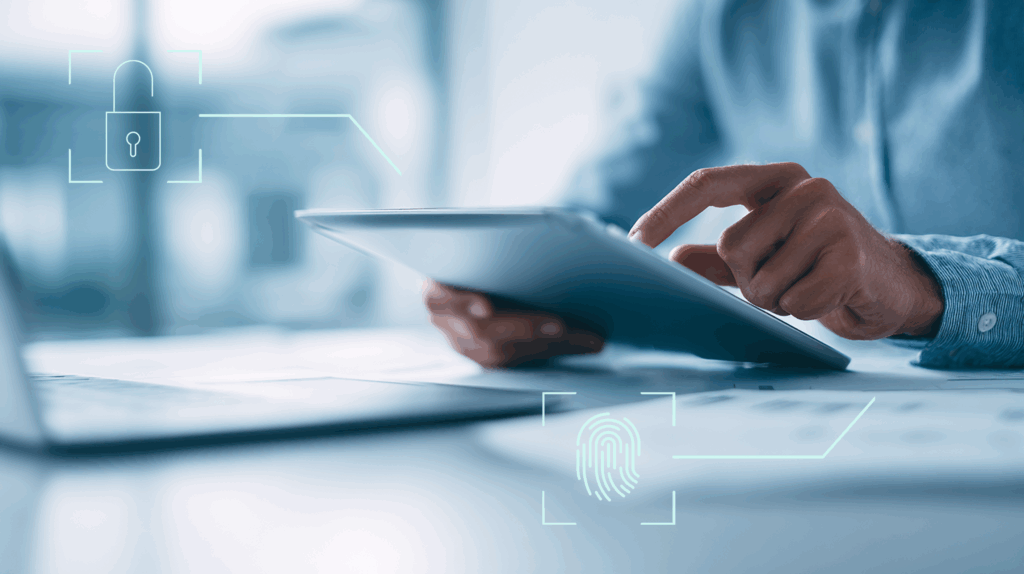IDV Article
From Babylon to biometrics: The epic evolution of IDs
How do you prove your identity? From ancient census rolls and royal seals to biometric passports, identity verification has come a long way. This blog traces the evolution of ID, exploring how it began, how it was verified, and how it became essential in our digital world.

In this blog, we’ll take you on a journey through the fascinating evolution of identification, tracing its roots from the Babylonian Empire to the digital age.
The concept of identification dates back thousands of years. The earliest recorded instance of a government collecting personal information from its citizens can be traced to 3800 BC in the Babylonian Empire. Since then, the methods of proving identity have undergone remarkable changes. What once started as simple pieces of paper has evolved into modern documents equipped with advanced security features, making them nearly impossible to forge.
Join us as we delve into the history of identification, exploring its transformation over time and uncovering how older forms of ID were verified. From ancient civilizations to today’s cutting-edge technology, we’ll highlight the pivotal moments that have shaped the way we establish identity.
What is an ID and why it matters today?
ID stands for identity document. This is a document that’s used to verify the identity of an individual. It’s usually an official card that contains your name and photograph or other information that proves who you are.
Identity documents take many forms. However, popular examples of identity documents include passports and driving licenses.
When did ID start getting circulated?
The history of identification dates back thousands of years, beginning in the Babylonian Empire, where censuses were conducted to count populations and measure resources. This ancient practice of counting people laid the groundwork for modern population tracking and ID systems.
As time progressed, data collection methods became more sophisticated. By the Roman Empire, personalized records served legal and civic purposes, leading to the creation of foundational documents such as birth registrations in ancient Rome, land deeds, and citizenship records.
The first recognizable example of a modern ID emerged in 1414 when King Henry V of England introduced “safe conduct” papers—early passports designed not for leisure travel but to protect citizens abroad under the monarch’s authority. These documents allowed individuals to prove their identity in foreign territories.
By the 17th and 18th centuries, travel became more widespread, particularly among Europe’s wealthy elite participating in The Grand Tour, an educational journey through cultural hubs. Passports of this era were simple, consisting of basic details like names, ages, and official wax seals. During the age of imperialism, “Sea Passes” were also introduced to regulate travel to colonial territories.
Like many aspects of society, the evolution of identification accelerated during times of war. Following World War I, the League of Nations introduced standardized passports, marking a significant milestone with the inclusion of photographs for the first time. After World War II, the International Civil Aviation Organization (ICAO) further refined and formalized travel document standards, ultimately creating the 44-page passport booklet that remains a global standard today.
What was an acceptable ID?
What qualifies as an ‘acceptable ID’ has varied greatly depending on the time period when the document was created. However, since the Roman Empire, both birth certificates and land title deeds have consistently been recognized as valid forms of identification for various reasons.
Passports, first introduced in the 1400s, have also been considered legitimate forms of ID. While modern passports are vastly different from the simple paper documents issued centuries ago, their purpose has remained largely unchanged for over 600 years: verifying a person’s identity by comparing them to the information provided on the document.

Instant identity verification across 12,000+ ID types, powered by AI & trust.
Supports 48 Languages • 95% First-Try Pass Rate • 6‑Second Verification
ID in the United Kingdom
In the United Kingdom, the development of identification systems followed a unique trajectory. Explore the full history of the UK passport to understand how these documents evolved from royal protections to modern biometric booklets.
The introduction of formal national identity documents, however, did not occur until the world wars. During World War I, the first National Registration was implemented to identify eligible men for military service. This system evolved significantly during World War II, when registration was expanded and centralized. Citizens were issued folded identity cards containing names and addresses, which became essential for daily life as these cards were required to access rationed goods. Although these identity cards were discontinued in 1952, the National Registration Number persisted, becoming a cornerstone for services like the National Health Service and the electoral roll.
While the UK moved away from compulsory national identity cards, the idea of national identity verification endured. The Identity Cards Act 2006 sought to reintroduce a unified system by creating national identity cards and establishing a National Identity Register. However, the initiative was short-lived, and the act was repealed in 2011, with only about 15,000 cards issued before its termination.
In summary, although the era of mandatory national identity cards in the UK ended in the mid-20th century, alternative forms of identification have taken their place. Today, passports, driving licenses, and Biometric Residence Permits (BRPs) serve as the primary tools for identity verification in the country.

ID in the United States
In the United States, identification practices before the 20th century were largely informal and decentralized. During the colonial era, individuals were identified through local community records, church registries, and tax rolls. Travel documents existed but were handwritten, unstandardized, and varied widely by region. Colonial authorities or local officials sometimes issued certificates of good conduct or military discharge papers, which could serve as proof of identity. However, these methods were inconsistent.
Enslaved individuals were tragically recorded not as citizens, but as property, documented in bills of sale or plantation inventories. Native populations were excluded entirely from these systems and frequently misidentified in colonial records.
The introduction of the Social Security Number (SSN) in 1936 marked a significant shift. Initially created to track retirement benefits, the SSN gradually evolved into the country’s de facto national identifier—despite the lack of a formal, unified identity document in the U.S. Over time, driver’s licenses, issued at the state level, took on much of this role, particularly after the enactment of the REAL ID Act following the post-9/11 focus on security.
In the 1970s, the U.S. government began digitizing records, laying the foundation for data to be cross-referenced across banks, tax agencies, and law enforcement. This evolution of identification practices reflects the growing complexity of governance and the need for standardized systems in modern society.

ID in Latin America
Identification systems in Latin America have deep historical roots, though their forms and purposes have evolved significantly over time. In pre-Columbian civilizations such as the Inca, Maya, and Aztec, identity was expressed through non-written means, tied to factors like clan, social hierarchy, and geographic origin.
The arrival of European colonizers brought new recordkeeping systems aimed at asserting control. Colonial authorities introduced baptismal registries, censuses, and caste classifications to document populations, primarily for taxation and governance rather than recognizing individual rights. For instance, the Spanish crown mandated indigenous communities to maintain padrones (local census records), though these often excluded women, children, and enslaved individuals.
By the 19th century, as countries in the region gained independence, civil registries began to take shape, becoming more formalized by the early 20th century. Argentina was a pioneer in this regard, introducing its Documento Nacional de Identidad (DNI) in 1947. Mexico followed with a dual system: the CURP (Clave Única de Registro de Población) for general population tracking and the INE credential, which functions both as a voter ID and a national identity card. Brazil implemented two distinct identifiers: the CPF, primarily for financial and tax purposes, and the RG, used for broader identity verification.
Other nations, like Chile, have adopted biometric ID cards embedded with chips, reflecting a broader regional trend toward secure digital identity systems. In recent years, many Latin American countries have prioritized the digitization of their ID systems, incorporating biometric technology and enhancing cross-border verification capabilities to meet modern needs.

How was it verified?
Throughout the history of ID, the way that different documents have been verified has varied widely. However, in spite of the fact that IDs have been around for thousands of years, the concept of verifying an ID by checking the information it holds against data on a centralized database is a modern concept.
Early passports, for example, contained the signature of the king himself (who was the passport issuer). Passports bearing the signature of Charles I are still in existence to this day.
However, from 1794, the office of the secretary of state took control of issuing passports. This is a function that the Home Office retains today. At this point, proper records were established and the information on a passport could be cross-referenced with official records for verification purposes, if required.
In the early 20th century, the modern passports we use today for overseas travel were first created. By this point, additional verification features were added. As well as a photograph and a signature, the document featured a personal description. However, the document would still be verified manually.
How ID has changed over the years
Modern identification cards are far cry from their pre-war predecessors. The earliest passports, such as the one issued to King Henry V, were little more than signed pieces of paper. Over time, however, ID cards have evolved into highly sophisticated tools. This evolution of travel documents has been central to identity verification systems worldwide.
The journey toward modern IDs began in 1840 when William Henry Fox Talbot introduced the negative-positive photographic process, enabling photographs to be added to identification documents. In 1858, Sir William Herschel took another leap forward by using inked fingerprints as manual signatures on legal documents, marking a foundational step in biometric identification. By the 1980s, this innovation had evolved significantly with the advent of automated fingerprint identification systems (AFIS) in Japan and the United States, making fingerprint classification faster and more reliable.
The digitization of records added another layer of advancement. In 1977, the U.S. transitioned from paper to computerized records and introduced a system capable of cross-referencing information across banks and government agencies. This shift laid the groundwork for the development of smart ID cards.
By the late 1980s, countries like Germany, Singapore, the Czech Republic, and Spain began adopting smart identity cards. These new cards integrated cutting-edge technology, storing extensive information such as dates of birth, digital signatures, and biometric data like fingerprints. Today, most ID cards are equipped with embedded integrated circuits, making them highly secure and difficult to counterfeit. Many also include biometric identifiers such as photographs, facial recognition data, iris scans, or fingerprints.
From humble beginnings as simple paper documents to the advanced, tamper-resistant smart cards of today, ID cards have become a cornerstone of modern identity management.

Book a consultation with Veriff
Veriff offers truly global identity verification, supporting more than 12,000 government-issued ID documents from over 230 countries and territories, and offering its verification flows in 48 different languages and dialects, This extensive coverage means Veriff can process passports, driver’s licenses, national IDs, and residence permits — even from less digitized regions in Latin America and Sub‑Saharan Africa.
Beyond document breadth, Veriff’s multilingual interface ensures a smooth experience for users worldwide, reducing friction and boosting first‑time verification success rates. This combination of global reach and local adaptability makes Veriff a powerful identity‑verification partner for businesses scaling internationally.














